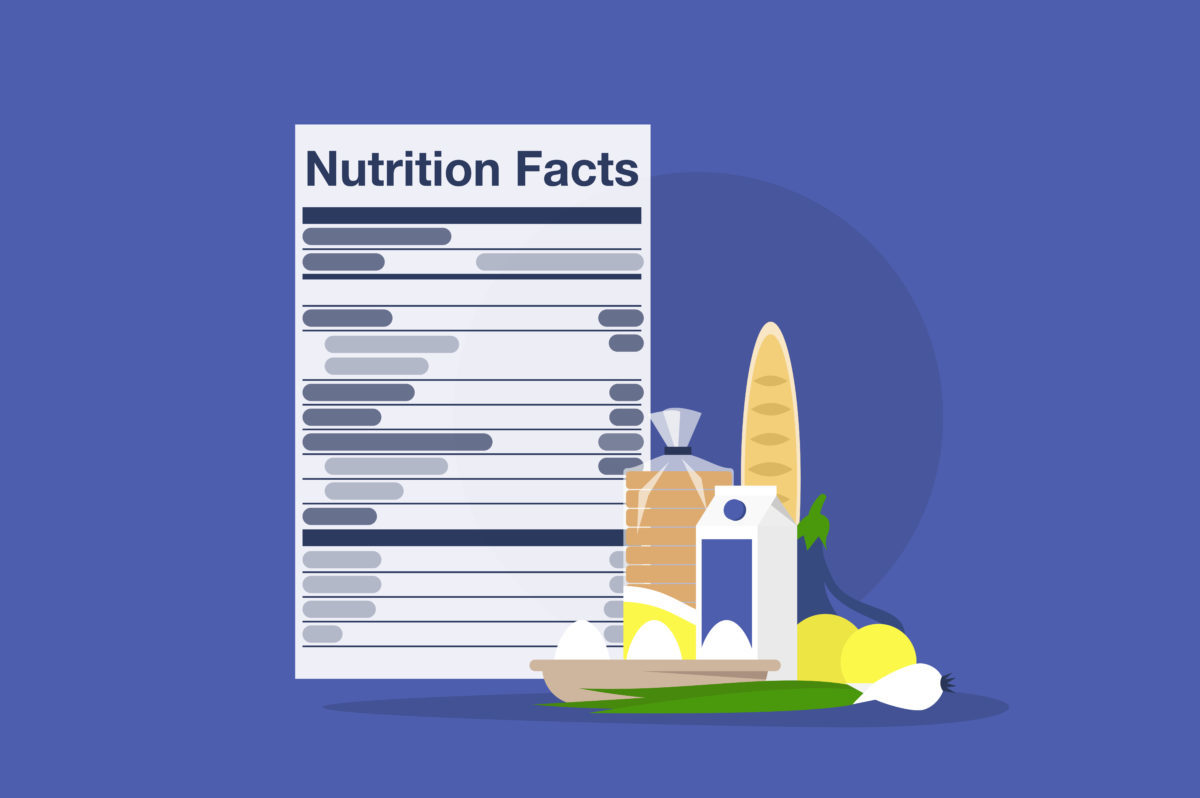Reading a nutrition label can be tricky.
Serving size, percent daily value, all the different fats — breaking it down takes time and expertise.
WellTuned created a guide for that, as well as some other key nutritional resources.
| What is it? | How does it work? | Food guides |
| Fat | Appetite | Tomatoes |
Even with all those resources, there are still some facts we’ve yet to explore when it comes to labels — especially with regard to fat and calories.
“In general, labeling foods ‘good,’ ‘clean,’ ‘bad’ or ‘junk’ food can set you up to fail,” says Leslie Cornett, registered dietitian-nutritionist at BlueCross BlueShield of Tennessee. “While we want to be mindful of the amount of fat and calories we’re eating — especially if we’re working to get weight under control for health reasons — I never want to encourage someone to give up a food they love for good, or to cut out whole food groups. Moderation is the key to lifelong results.”
3 key things to know about fat and calories on nutrition labels
1. “Healthy” is a relative term, especially as it relates to fat
In recent years, the Food and Drug Administration (FDA) shifted their dietary fat recommendations:
- Away from limiting total fat intake,
- To account for “good” fats — aka mono and polyunsaturated fats.
| Now, foods that use the term “healthy” on their labels must either be | ||
| Low in total fat | OR | Have a fat makeup that’s mostly “good” fats |
| They must also be low in sodium and cholesterol while being significant sources of Vitamins A & C, calcium, iron, protein OR dietary fiber | ||
Today’s recommendations
Based on a 2,000-calorie diet, the FDA recommends a max of 78g of fat per day.
| High-fat foods | Low-fat foods |
| 20% of total fat per serving | 5% of total fat per serving |
“Low,” “reduced” and “free”
While the new recommendations take a more holistic approach to health, many brands still use the old designations when it comes to fat and calories. Here are some terms you may see on nutrition labels and what they mean.
| Synonyms | Objective or relative | Definition | |
| Low fat | Light
Lite |
Objective | 3 grams of fat or less per serving |
| Low calorie | Objective | Fewer than 40 calories | |
| Reduced fat | Less
Lower Fewer |
Relative | 50% or less of the fat found in the original product |
| Reduced calorie | Relative | 25% fewer calories per serving | |
| Fat free | Zero
No |
Objective | Less than 0.5 grams of fat per serving AND
No added fat or oil |
| Calorie-free | Objective | Fewer than 5 calories per serving | |
As you can see, “fat free” is tricky because brands can round down if the product is a “negligible” or “dietarily insignificant” source of fat.
The issue is further confused because “light” or “lite” versions of foods must:
- Meet the reduced-calorie mark of having 25% fewer calories/serving than the “regular version” (which is subjective), AND
- Be lower in fat, although they don’t designate how much lower.
Tips for tackling this
Cornett: Even though labeling claims are not 100%, most of the provided data is within a range that’s reliable enough to use for general nutrition. Try not to feel overwhelmed with the complexities of labels. Instead, use the data as an estimate of the nutrients you’re consuming.
2. Not all calories and fat are “bad,” but empty calories are
Calories and fat aren’t all created equal. A food that’s high in calories or fat may also be high in nutrients such as fiber, vitamins or minerals. And when it comes to fat specifically, “good fats” such as avocados, nuts and fish are healthy even if they contribute to a calorie-dense meal.
You do want to avoid, however, empty calories: food that comes with little nutritional value in exchange for their calories and fat. Think soda, cookies, snack foods and many baked goods.
Tips for tackling this
Cornett: To evaluate whether a calorie is empty, ask:
- Does this food or drink satisfy my hunger?
- Does it have nutritional value?
If the answer is “no” to either or both, you’re probably consuming empty calories.
3. The optimal amount of fat and calories varies person to person
When determining whether a food is a good or bad choice, assess the health benefits of that food as a whole, and consider how it can be worked into your daily meal plan.
Tips for tackling this
Cornett: For example, if the item has health benefits — nutrients, vitamins and minerals, omega-3 fatty acids — but contains a higher amount of fat and calories, it can still be part of a healthy diet. By measuring the correct portion size, you can still enjoy the food or beverage while remaining within your overall calorie and fat intake.
More from WellTuned: The truth about food trends
- Vol 1: organic, fresh vs. frozen, buying local, cage-free eggs, plant-based eating, frozen vs. fresh vegetables
- Vol 2: agave nectar, juice cleanses, bone broth, coconut oil
Get more information about specific health terms, topics and conditions to better manage your health on bcbst.com. BlueCross BlueShield of Tennessee members can access wellness-related discounts on fitness products, gym memberships, healthy eating and more through Blue365®. BCBST members can also find tools and resources to help improve health and well-being by logging into BlueAccess and going to the Managing Your Health tab.


